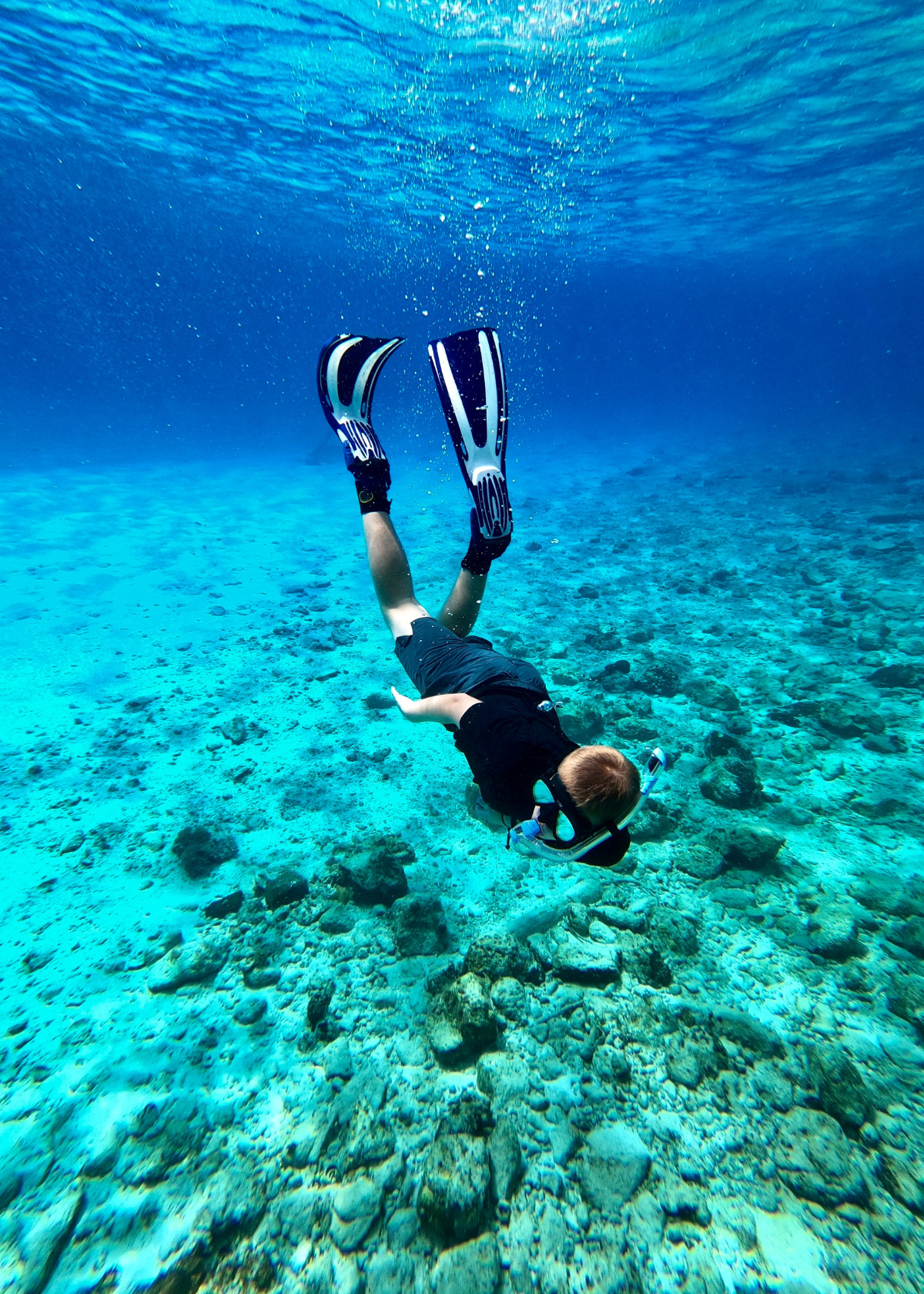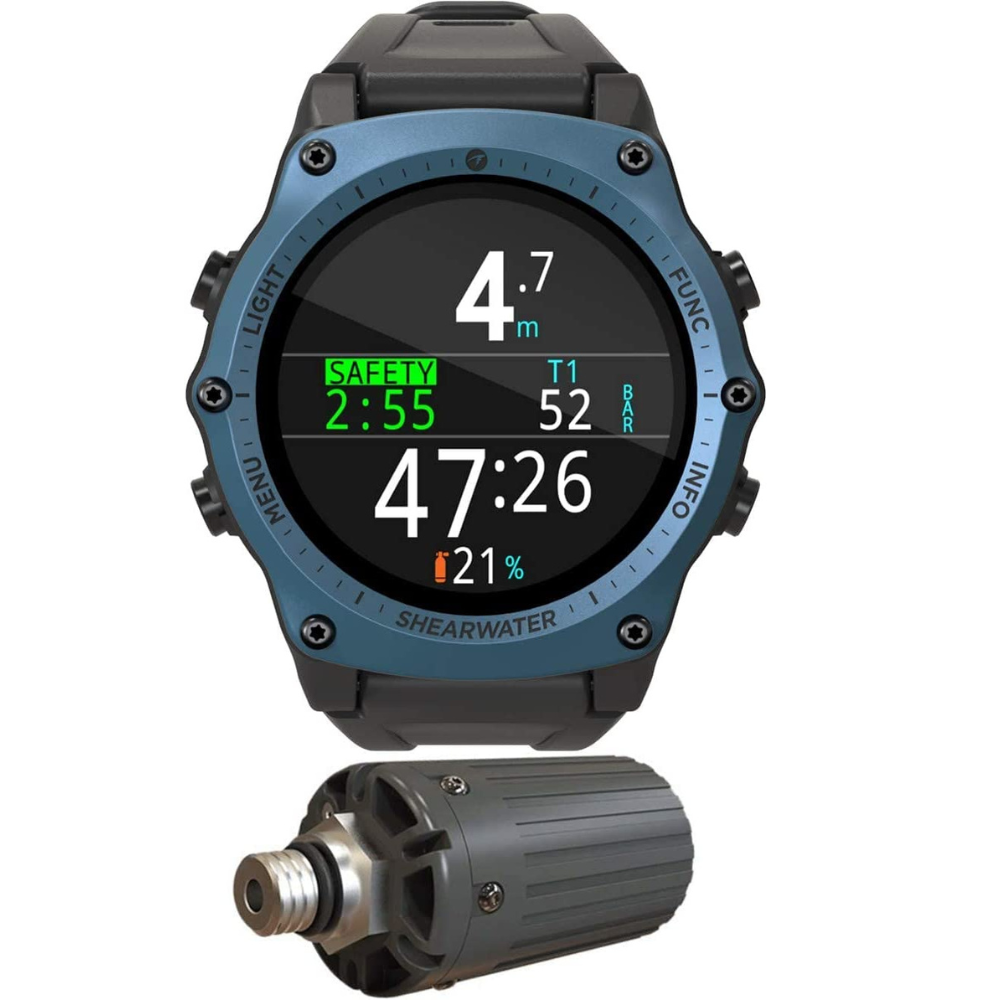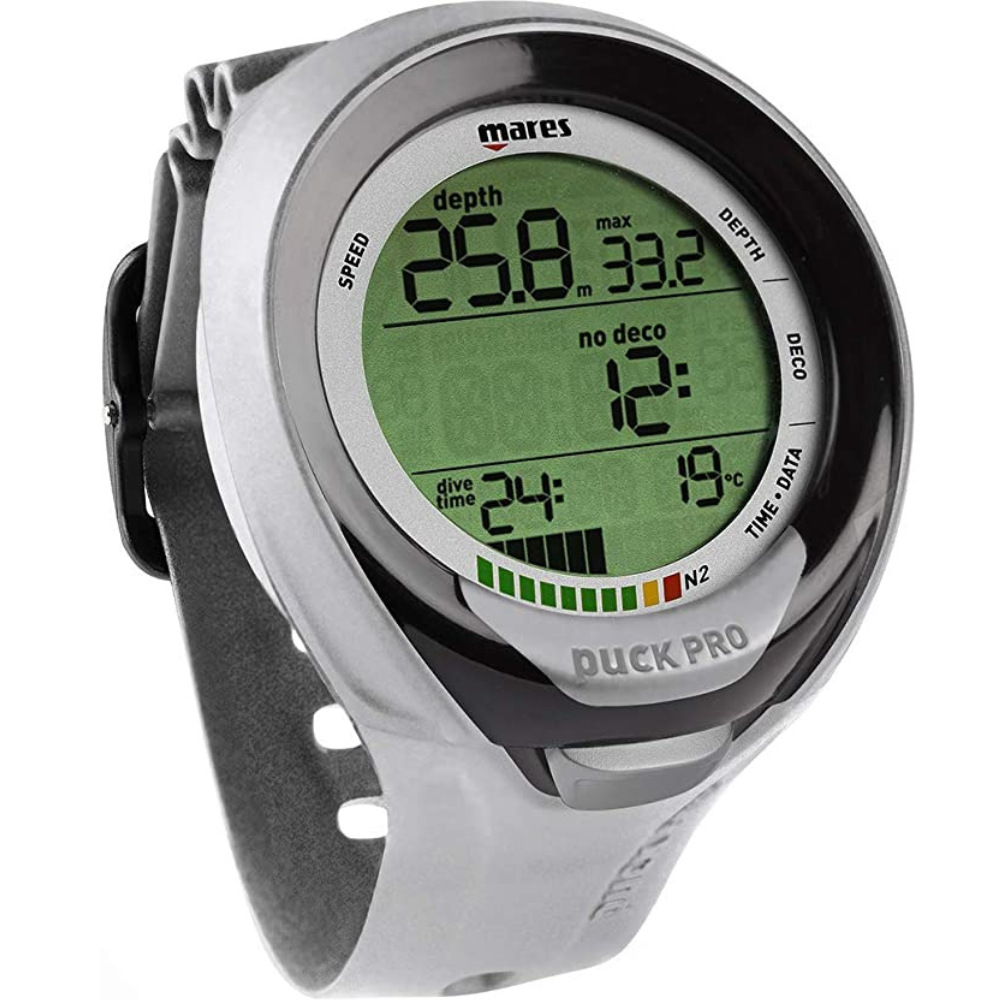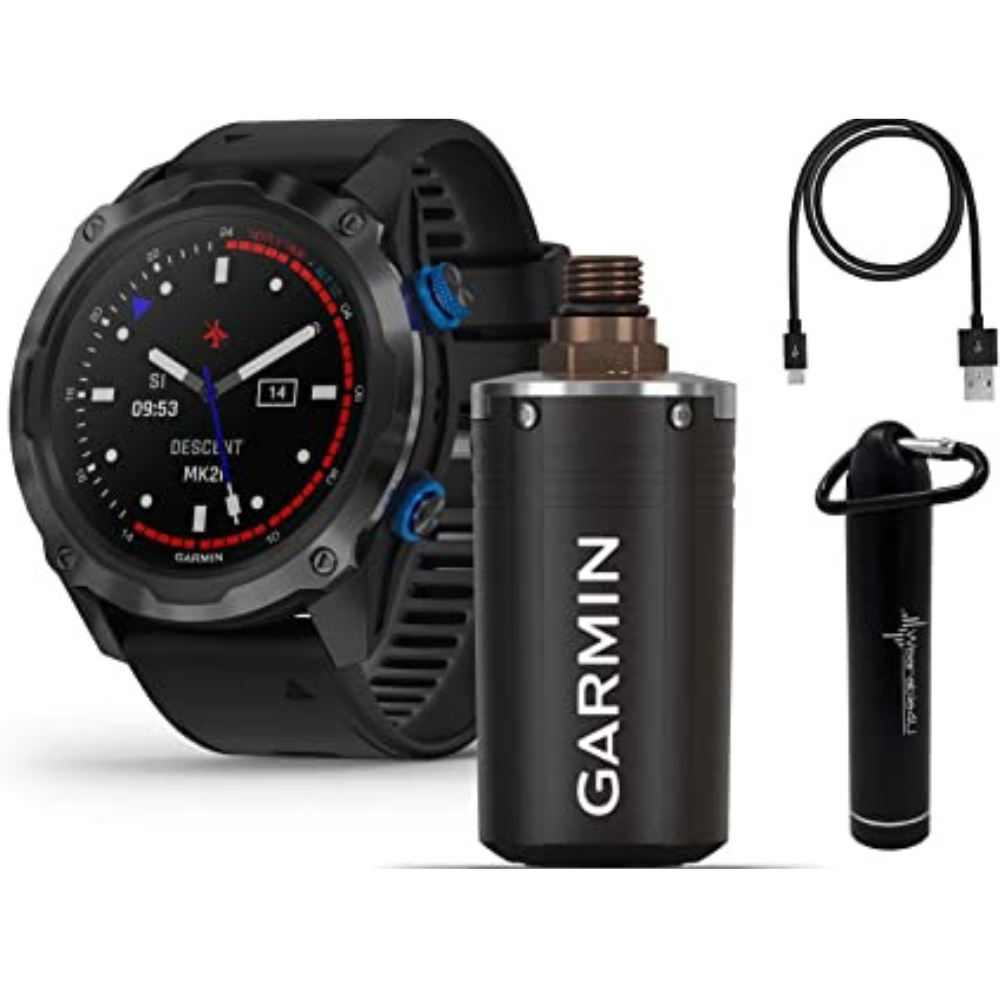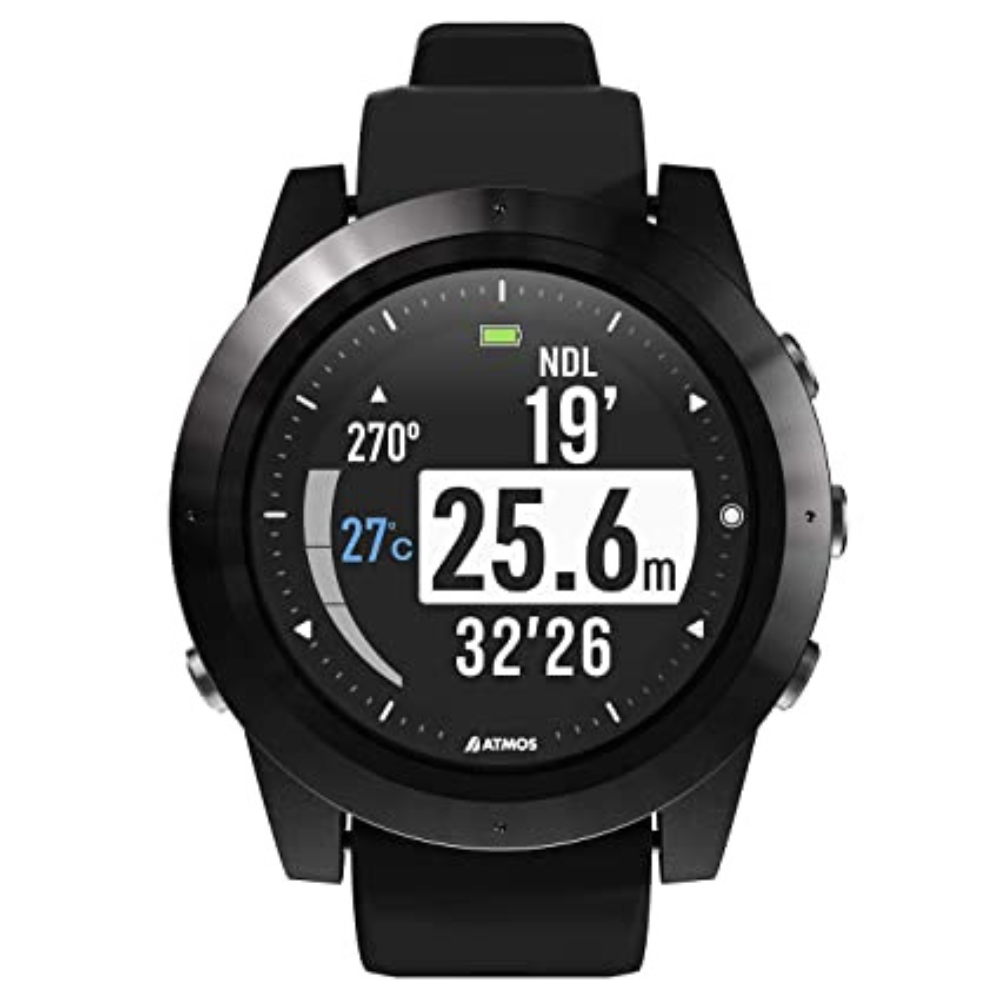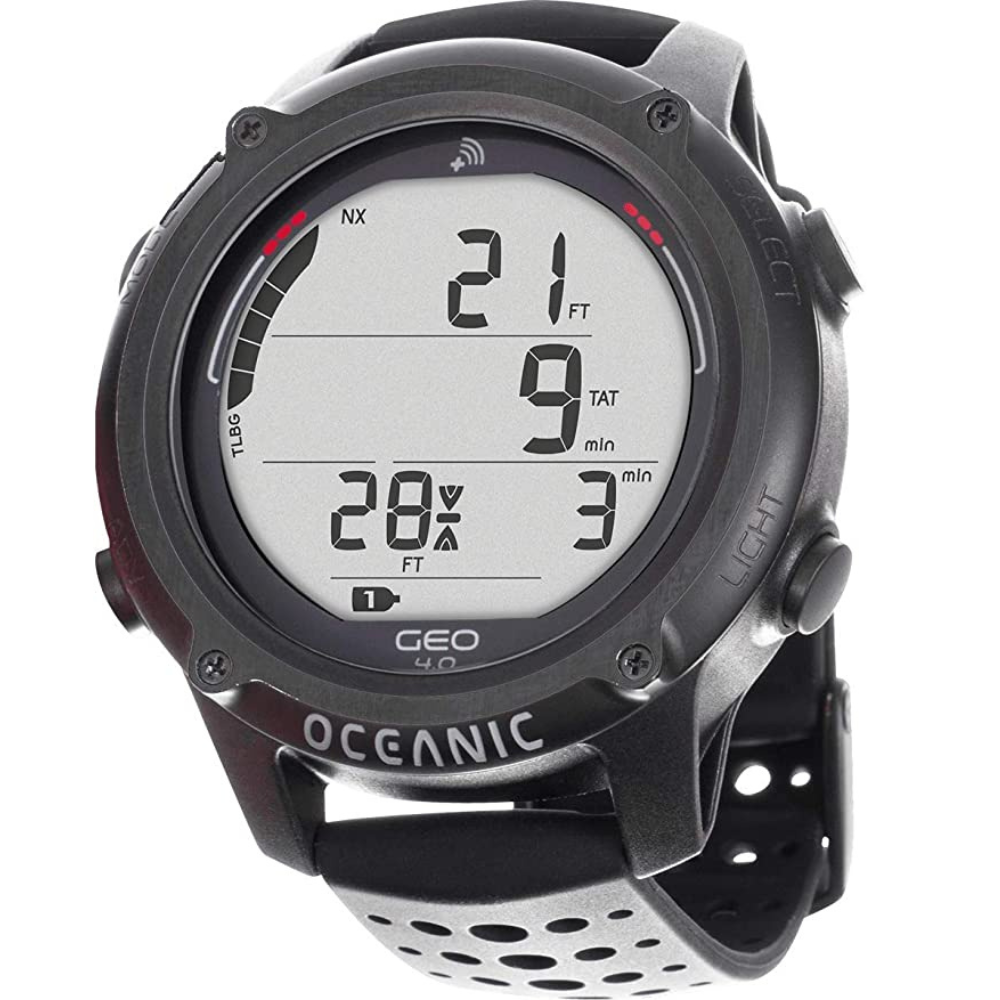Are you looking for a new Dive Computer?
If you're like most divers, you know that a scuba dive computer is an essential piece of equipment. But with so many different models on the market, it can be difficult to decide which one is right for you. In this blog post, we will discuss some of the key factors you should consider when purchasing a dive computer. We'll also take a look at some of the best models on the market and give you our recommendations!
A good dive computer can make your diving experience much more enjoyable. It's important to choose one that fits your needs and meets your expectations. With so many great options available, we're sure you'll find the perfect dive computer for your next adventure!
How We Choose the Best Dive Computer for You
When it comes to buying dive computers in 2022, there are so many options to choose from. How can you be sure that you're making the best decision for your needs?
It's hard to know which dive computer is right for you when there are so many different models and features to choose from. And if you make the wrong decision, it could mean ruining your diving experience or even worse - putting your life at risk.
I've done all of the hard work for you and have read hundreds of reviews on Amazon to find the best dive computers for 2022. Whether you're a beginner or an experienced diver, I've got the perfect recommendation for you.
We hope you find your next favorite thing from the list below! We selected each product with care and thought. Some may have been sent to us for review but all opinions in this article are ours- we know that's why Techi-Becky Reviews was created so readers could get an honest opinion on anything they were curious about online without having worry if it would be negative or not helpful towards their needs because every single piece of content submitted goes through rigorous scrutiny by professional editors who only publish items backed up by research evidence when possible.FYI — Techi-Becky Reviews may collect a share of sales or other compensation from the links on this page if you decide to buy something (that's how we stay in business) Thanks for reading!!!
Becky’s Choice:
The Shearwater Research Teric Wrist Dive Computer with Transmitter is the perfect dive companion for both technical and recreational divers.
The Teric includes open-circuit and closed-circuit Air, Nitrox Trimix multi-gas functionality along with a three-axis tilt-compensated digital compass.
It has Recreational, Gauge, Free-diving, Open-Circuit Tech, and Closed-Circuit/Bail-Out modes.
The easy single-press access to different tools like compass, stopwatch, countdown timer, etc., makes it a breeze to use underwater. There are also haptic (vibration) and audible alarms that can be disabled (none, either, both) to prevent annoying other divers in the vicinity.
The Teric offers an information screen utilizing a {1.39 in | 35 mm} full color AMOLED display with a {Diameter x Height | 55mm x 18mm} body and {4.25 oz | 120.4 g} weight.
Plus, the Teric can provide time-to-surface based on 'look ahead' at planned gas switches making it the perfect dive computer for any level of diver.
Techi- FunFacts:
The Shearwater Research Teric Wrist Dive Computer with Transmitter is a top-of-the-line Nitrox trimix 100% User Changeable Battery decompression dive computer in wrist-watch form factor Bhlmann zhl-16c algorithm with configurable gradient factors. The device offers a lot of features for both beginner and experienced divers.
For starters, it is compatible with multiple gas definition presets, meaning that you can use it with any combination of oxygen, nitrogen, and helium. Additionally, the Teric will NOT "lockout" after a missed stop or ascent rate violation.
This is a great feature for those who are still learning the ropes of diving. After the dive, the Teric communicates via Bluetooth to connect with the Shearwater Cloud dive log manager. This is compatible with MS Windows, OS X, iOS, and Android devices and it supports wireless log downloads and firmware updates.
The Teric also supports hoseless gas pressure integration, sometimes called air integration (AI). This means that it is capable of wirelessly connecting to either one or two optional transmitters.
This gives the diver the ability to monitor up to two tank pressures. It is also capable of calculating the Gas Time Remaining (GTR) on one assigned tank.
All in all, the Shearwater Research Teric Wrist Dive Computer with Transmitter is a great choice for those who want a reliable and feature-rich dive computer. It is among the best dive computers in 2022.
Becky’s Choice:
Looking for a top-of-the-line dive computer that does it all? Look no further than the Mares Puck Pro Plus! This feature-packed device is perfect for both novice and experienced divers alike.
It's easy to use, yet still provides all the information you need for a safe and enjoyable dive. Plus, the new backlight and improved display make it even easier to read underwater.
Whether you're just getting started in diving or are a seasoned pro, the Mares Puck Pro Plus is the perfect dive computer for you!
Techi- FunFacts:
The Mares Puck Pro Plus Dive Computer is a high-performance, feature-packed device. It is extremely user-friendly, with clear and concise displays that show all the information you need while diving.
The Puck Pro Plus also has several safety features, including an automatic adjustment for Mountain Lake mode, which kicks in at altitudes over 3.500 m. With a maximum depth of 150m, the Puck Pro Plus is also ideal for deep sea diving.
And for those who want to extend their dive time, the Nitrox function allows you to mix your gas mixture with up to 99% oxygen.
Whether you are just starting or are an experienced diver, the Mares Puck Pro Plus Dive Computer is a great choice for all your scuba dive needs. One of the best computers on the market.
Becky’s Choice:
The Garmin Descent Mk2i is the perfect dive computer for those who want the best of both worlds – a sophisticated design with all the bells and whistles, and a rugged build that can withstand even the most extreme conditions.
This titanium-carbon gray DLC with black band dive computer is packed with features that will make your diving experience more enjoyable and safe.
The large, sunlight-readable 1.4” color display is easy to read, even in low light conditions.
The intuitive user interface makes it easy to navigate, even when you're wearing gloves.
The Garmin Descent Mk2i also features advanced safety features like built-in GPS and an electronic compass, so you'll always know where you are and how to get back to safety.
If you're looking for a top-of-the-line dive computer that has it all, look no further than the Garmin Descent Mk2i.
Techi- FunFacts:
The Garmin Descent Mk2i Watch-Style Dive Computer is a top-of-the-line dive computer that is perfect for those who want to track their every breath.
The Descent T1 transmitter allows you to get multiple dive modes for single and multiple gas dives, gauge, apnea, apnea hunt, and closed circuit rebreather.
The 2200 mAh E-bank charger ensures that you will never have to worry about your device running out of battery. Technical dive computer.
Whether you're enjoying sports or the outdoors, the Garmin Descent Mk2i Watch-Style Dive Computer is a great choice for those who want the best possible performance.
Thanks to its advanced features and durable design, the Garmin Descent Mk2i Watch-Style Dive Computer is sure to be a favorite among serious divers.
Becky’s Choice:
Are you looking for the best diving experience? Look no further than the Atmos Mission One Dive Computer. This powerful and intelligent dive computer is perfect for scuba and free diving enthusiasts.
Its advanced alarm system provides instant vibration and intuitive display notification. Equipped with GPS and a digital compass, you'll always stay oriented underwater.
And with ATMOS's dive log App, you can easily upload GPS locations of your favorite dive sites. Rugged and sleek, the Atmos Mission One is the most desirable dive companion around. So don't wait any longer.
Get the Atmos Mission One Dive Computer and start exploring the world beneath the waves!
Techi- FunFacts:
Atmos Mission One Dive Computer is an easy-to-read screen and big layout display. The device also has a constant backlight, Digital compass, audible, vibration & display alarm system, ascent rate monitor, record dive site GPS & Dive spot guide (surface use only), fresh/ salt water 100 dive log memory, graphical dive log, dive planner, reset residual nitrogen function and free-diving mode.
The device is also surface rest finish notification, ascent/ descent rate monitor, and stopwatch friendly.
The device is fresh/ salt water record dive site GPS & Dive spot guide (surface use only) 100 dive log memory gauge mode as well. Atmos Mission One Dive Computer is an easy-to-read screen and big layout display.
It also has a bottom timer, digital compass, depth/ time alarm, audible, vibration & display alarm system. WatchMessage.The Atmos Mission One Dive Computer is a great choice for those interested in diving.
The device is easy to read and has a big layout display. It also has a constant backlight, digital compass, and audible alarms. You can also use the GPS to keep track of your dive sites.
This computer is a great choice for those who want an easy-to-use computer with all the bells and whistles.
Becky’s Choice:
If you're an adventurous diver who wants to explore the depths of the ocean, you need a reliable wrist computer that can keep up with you.
The Oceanic Geo 4.0 Wrist Computer is perfect for serious divers who want to have all the information they need at their fingertips. It connects to your smartphone through the free DiverLog+ App, so you can always have your dive data close at hand.
And with Oceanic's patented Dual Algorithm, you can choose between DSAT or Pelagic Z+ to provide no-deco and deco profiles, depending on your diving needs.
Whether you're exploring calm waters or braving the roughest seas, the Oceanic Geo 4.0 Wrist Computer is an essential piece of gear for any serious diver.
Techi- FunFacts:
This is one of the most advanced dive computers. The Oceanic Geo 4.0 Wrist Computer is a versatile wristwatch that is perfect for any explorer. Whether you are hiking, diving, or simply enjoying the outdoors, the Geo 4.0 can help you stay safe and connected.
With three modes of operation, WATCH, AIR & NITROX, GAUGE, and FREEDIVE Version, Geo 4.0 can handle any situation.
The Bluetooth 4.0 connection allows you to stay connected to your Diverlog+ account so you can track your progress and log your dives.
The backlit LCD easy- to read- display in any light condition, and the water activation and push button make it easy to use. A technical dive computer with a user-changeable battery With a battery life of up to 300 hours, the Geo 4.0 is always ready when you are.
So whether you are an experienced diver or a new adventurer, the Oceanic Geo 4.0 Wrist Computer is the perfect companion for your next adventure and the best one of the computers on the market.
Things to Consider when Choosing a Dive Computer:
Choosing the right dive computer can be a daunting task. With all of the different features and brands on the market, it's hard to know where to start. Here are a few things to keep in mind when choosing a dive computer:
Recent Model:
The latest releases always have the newest technology, like GPS and heartrate monitors. However, you probably won't need to upgrade your dive computer very often. Make sure to read real-world user reviews to see if the new features are improvements. Oftentimes, the last generation of a product will have a price drop, so it's worth checking out those models too.
Budget:
Dive computers can range in price from a few hundred dollars to over a thousand. It's important to figure out how much you're willing to spend before starting your search. That way, you can narrow down your options and save yourself some time.
Features:
Every dive computer has different features, so it's important to decide which ones are most important to you. Look for a full-featured dive computer. Do you need something basic or do you want all the bells and whistles? Once you know what you're looking for, it will be much easier to find the perfect dive computer for your needs.
Some computers will also allow you to switch gases during your dive. This is typically done on the ascent, where divers switch gases to breathe air that's oxygen-rich to decrease their decompression time. Most recreational divers will never use this feature, but if you're into technical diving, then it's a must-have.
Usability:
You want a computer that is easy to use, even when you're wearing gloves. Wireless Bluetooth connection Customizable display Rechargeable battery and wireless charging Easy to navigate Vibrating Alarm No air integration No digital compass Buttons can be difficult to push underwater with gloves on.
Readability:
You need to be able to see your computer, and it should have an easy-to-read display even in low light conditions.
Design:
Watch style is always important. Some computers are sleek and compact, while others are bulky and hard to carry.
Battery Life
User-replaceable battery- Does your computer have to be sent to a dealer to have the battery changed? These computers will cost you a bit more in the long term as you will have to pay each time, but it's worth it because you don't want your computer dying halfway through a dive!
Customization
Options and Bluetooth connectivity can be nice features to have, but they're not essential.
Price:
Think about price. Dive computers can range from affordable to quite expensive, the price point may vary, so it's important to choose one that fits your budget.
Best Dive Computer- FAQs
How much should I spend on a dive computer?
Deciding how much to spend on a dive computer is a personal decision. Depending on what price point you are willing to go to. There are a few factors to consider, such as what type of diver you are and what features you need.
Recreational divers can get by with a less expensive model, while technical divers may want to invest in a more feature-rich computer.
Air integration is another factor to consider; if you plan on diving with air tanks, you'll need to make sure your computer is compatible.
Ultimately, it's up to you to decide how much you want to spend on a dive computer. models in the USD 500 range tend to be a good middle-of-the-road option for most divers.
What makes a good dive computer?
The expectations and wishes are different for beginning divers or advanced divers and technical divers. A dive computer is an essential piece of gear for any serious scuba diver. In addition to depth and time, a good dive computer also tracks things like water temperature, tank pressure, and decompression status.
This information is essential for planning and executing a safe dive. A good dive computer should have a clear, bright screen that is easy to read, even in low light conditions.
The user interface should be simple, allowing the diver to quickly access the information they need.
The display metrics and colors should be customizable so that the diver can choose the information that is most relevant to their dive. Ultimately, a good dive computer provides the diver with the information they need to plan and execute a safe and enjoyable dive.
Are dive computers necessary?
Yes-A dive computer does several key things for scuba diving. Most importantly, it tracks your nitrogen loading in real-time and alerts you when you are approaching your no-decompression limit.
This is important because if you go over your limit, you risk getting nitrogen narcosis, which can lead to serious injuries or even death.
A dive computer also tracks your depth and bottom time, which is important for safety reasons.
If you are diving with a group, it is also a good idea to have a dive computer so that everyone can monitor their progress and ensure that everyone remains safe. In addition, many dive computers now offer features such as GPS tracking and the ability to download your dive data to an app, which can be very helpful when planning future dives.
For all of these reasons, dive computers are essential for any serious scuba diver.
What is the difference between a dive computer and a dive watch?
Dive watches have been around for centuries, but dive computers only came on the scene in the last few decades. So, what’s the difference between these two devices?Essentially, a dive computer is a more sophisticated version of a dive watch. Both types of devices are designed to help you avoid decompression sickness by keeping track of time and depth, but a dive computer can do much more than a dive watch.
One of the best computers on the market will also track your heart rate, air consumption, and water temperature. Some even have built-in GPS so you can track your location underwater. This makes them an essential piece of equipment for serious divers.
While dive watches can be worn as everyday watches, dive computers are designed specifically for diving. This means that they’re often larger and more rugged than dive watches. They also usually have a simpler interface so you can easily access the information you need when you’re underwater.
So, if you’re looking for a device to help you keep track of time and depth while diving, then a dive computer is the ideal choice. If you want a versatile watch that you can also wear on land, then a dive watch is the better option.
How deep can you dive without decompression stops?
For most scuba divers, the deepest they will ever need to go is 130 feet, and many dive sites are shallower than that.
Decompression stops are typically only required when diving deeper than 130 feet, so as long as you stay within that limit, you won't need to make any stops on your way back to the surface.
Of course, it's always important to heed the signs and instructions at each dive site, as some may have deeper depths that require decompression stops.
But in general, as long as you stay within the the130-foot limit, you can enjoy a hassle-free dive without making any stops along the way. Some computers offer An objective measure of decompression algorithm relative to other computers in the test.
How much money does a full set of scuba gear cost?
Want to Scuba dive? Most people think that scuba diving is a very expensive sport. While it is true that you need to purchase or rent some specialized equipment, it does not have to be overly expensive.
A full set of scuba gear will cost scuba divers between $1000 and $5000 price point, depending on the quality and features of the gear.
Of course, you can always find cheaper or more expensive gear, but this is a good estimate for a complete set of high-quality gear. Of course, you will also need to factor in the cost of scuba dive lessons, as well as any travel expenses if you are planning on diving in exotic locations.
However, once you have your gear and your certification, the only other costs associated with scuba diving are your dive flag and any personal items you might want to bring along on your dives.
So, while there is an initial investment required for scuba diving, it is not as expensive as some people think. And, once you have your gear, the only ongoing costs are relatively minimal.
Do dive computers have GPS?
While many modern dive computers come equipped with a variety of features and functions, one area where they have generally lagged is GPS capabilities.
However, that is beginning to change, as more and more manufacturers are beginning to offer dive computers with GPS functionality. It allows you to mark dive entry and exit points.
This is a welcome development for divers who want to be able to take advantage of the many benefits that GPS can provide.
GPS can be used to track your position underwater, which can help prevent getting lost or disoriented.
It can also be used to create detailed maps of dive sites, which can be a valuable tool for both divers and dive instructors.
In addition, GPS can be used to log dive data and track progress over time.
As such, it is not surprising that GPS-enabled dive computers are becoming increasingly popular with both recreational and professional divers.
Do dive computers have a compass?
Dive computers have come a long way in recent years, and many of them now include built-in compasses.
This is a great feature for divers, as it allows them to easily keep track of their bearings underwater.
Additionally, some dive computers will also provide navigation information and directional cues, making them even more useful for exploring new dive sites.
While not all dive computers have built-in compasses, many of the newer models do, and this feature can be extremely helpful for divers of all levels.
When using a dive computer I should ascend and go up at a rate not faster than?
Divers use dive computers to help them safely descend and ascent in the water. When using a dive computer, it is important to ascend slowly, at a rate not faster than 18 meters/60 feet per minute.
This prevents nitrogen bubbles from forming in your bloodstream and causing decompression sickness. It is also important to stop at 5 meters/15 feet for eight minutes before surfacing, to allow any residual nitrogen to dissipate.
After reaching the surface, do not dive for at least six hours to allow your body to fully recover from the nitrogen exposure.
By following these guidelines, you can safely use a dive computer and enjoy your time underwater.
When should I replace my dive computer?
Most dive computers will last for several years with proper care and maintenance. However, there are a few signs that it may be time for a replacement.
If you notice any cracks or leaks in the casing, it's time to get a new one. A pinhole-sized leak can likely be patched by your local dive shop, but if your BCD has been patched repeatedly, it's time for a replacement.
Other signs of wear such as frayed straps or broken buckles, or constantly leaking valves are good indicators the BCD has reached the end of its useful life.
Of course, if your computer simply stops working, that's another sign that it's time for an upgrade.
With advances in technology happening all the time, it may also be worth considering a replacement even if your current computer is still working properly.
After all, the latest model may offer features and capabilities that weren't available when you purchased your last one.
Ultimately, it's up to you to decide when to replace your dive computer, but if you're noticing any signs of wear or if it's been more than a few years since you've upgraded, it may be time to start shopping for a new one.
Should you buy a dive computer with air integration?
Dive computers with air integration allow divers to connect a pod to their scuba tank to display the current tank pressure directly on their computer display. It is a convenient feature that often replaces an additional pressure gauge and can be found on intermediate to high-end dive computers.
However, it is not required and especially technical divers should choose an analog pressure gauge instead. I don't think air integration is a must-have feature but surely nice to have.

Best Dive Computer For You
So, what is the best dive computer for you? It depends on your budget and needs. But we hope that this article has helped you understand the different features of dive computers and given you a few ideas of which one might be right for you.
We would be happy to help you find the perfect dive computer for your next diving adventure! Tap the green button to check the price on the Best Dive Computer For You and get diving!
Thanks for Techin-IN
Becky.


